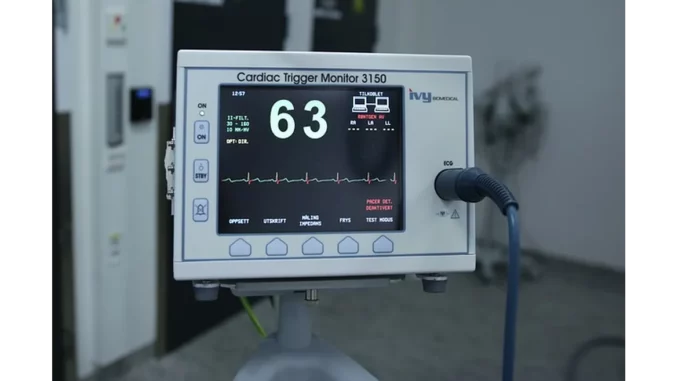
In the lively atmosphere of a bustling London café, I had the opportunity to engage in an enlightening discussion with Dr. Lucy Harrington, a distinguished biomedical engineer specialising in medical equipment maintenance. Our dialogue centred around the intriguing findings of a recent Technavio report, which projects a USD 51.21 billion expansion in the global medical equipment maintenance market from 2024 to 2028. The driving force behind this remarkable growth is none other than Artificial Intelligence (AI).
Dr. Harrington’s enthusiasm was infectious as she delved into the transformative impact of AI on the industry. “AI is revolutionising the field,” she asserted. “It has moved beyond merely repairing machines; it’s now about predictive analytics, optimising equipment performance, and extending the lifespan of crucial medical devices.” The report underscores a significant shift towards preventive maintenance, a crucial strategy for safeguarding patient safety and maintaining high-quality care. “In healthcare, equipment downtime isn’t a mere inconvenience; it can be a matter of life and death,” Dr. Harrington noted. “Predictive maintenance, underpinned by AI, enables us to anticipate potential failures and address them proactively.”
As our conversation progressed, Dr. Harrington shed light on the evolving role of Original Equipment Manufacturers (OEMs) within this dynamic market. “OEMs have always played a vital role in supplying healthcare organisations with essential equipment,” she remarked. “However, with the integration of AI, they are transitioning into maintenance partners, offering solutions that foresee and forestall equipment failures.” This evolution is particularly pronounced in regions that are rapidly adopting advanced medical technologies, including regenerative medicine, surgical robots, and wearable medical devices. “Emerging nations are driving demand for sophisticated maintenance solutions,” Dr. Harrington explained. “AI is instrumental in managing these complex systems efficiently, ensuring optimal outcomes.”
Despite the promising potential of an AI-driven future, there are hurdles to overcome. “The high cost of maintenance presents a significant challenge,” Dr. Harrington acknowledged. “Although AI solutions may be costly initially, they promise long-term savings by minimising downtime and repair expenses.” Our discussion also touched on the pivotal role of the Internet of Things (IoT) in asset management. “IoT and AI are natural allies in this sector,” she stated. “IoT provides the data, while AI interprets it, crafting a comprehensive maintenance strategy that can significantly enhance equipment performance.”
An intriguing aspect of our dialogue was the exploration of regulatory frameworks governing medical devices. Dr. Harrington emphasised the dual nature of regulations: they ensure quality and safety but also introduce layers of complexity. “AI can assist in navigating these frameworks by ensuring compliance and streamlining processes,” she explained. Moreover, she highlighted the importance of balancing in-house and outsourced maintenance. “It’s a delicate equilibrium,” she observed. “In-house teams offer tailored solutions and rapid responses, whereas outsourced services bring specialised expertise and a broader perspective.”
As our discussion drew to a close, Dr. Harrington expressed her optimism for the future. “The integration of AI in medical equipment maintenance is just the beginning,” she remarked with a hopeful gleam in her eye. “With continuous advancements, healthcare providers will be able to deliver even better patient care.” Her insights painted a vivid picture of a future where AI not only maintains machines but also elevates the very essence of healthcare delivery. As I departed the café, it became evident that the Technavio report was far more than mere numbers and forecasts; it offered a glimpse into a transformative era driven by AI, promising a safer and more efficient healthcare landscape.


Be the first to comment